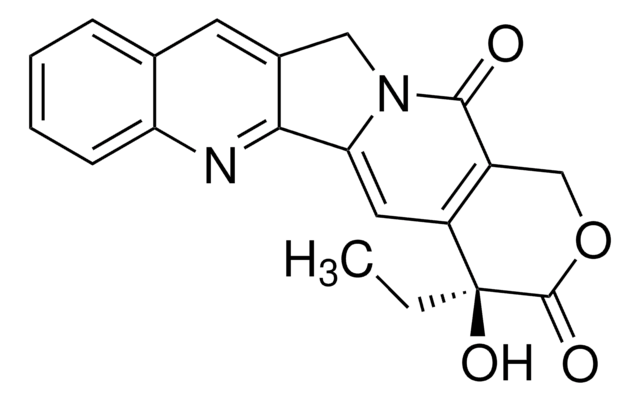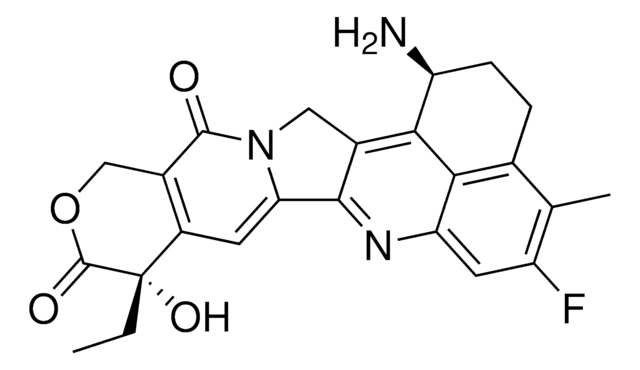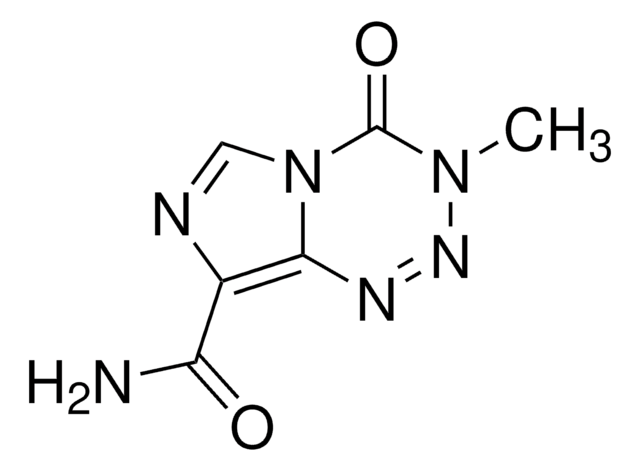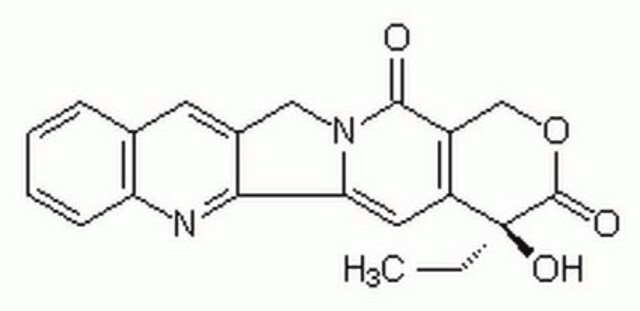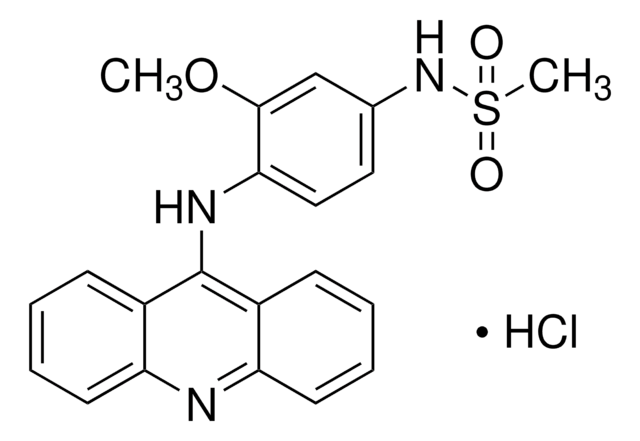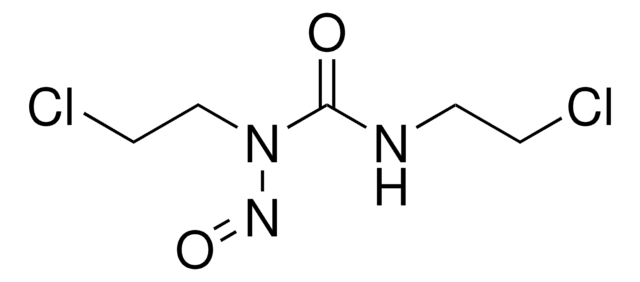T2705
Topotecan hydrochloride hydrate
≥98% (HPLC and enzymatic), powder, topoisomerase I inhibitor
Synonym(s):
9-[(dimethylamino)methyl]-10-hydroxy-(20S)-camptothecin hydrochloride hydrate, NSC-609669 hydrochloride hydrate, SKF-104864A hydrochloride hydrate, hycamptamine hydrochloride hydrate
About This Item
Recommended Products
Product Name
Topotecan hydrochloride hydrate, ≥98% (HPLC and enzymatic)
Quality Level
Assay
≥98% (HPLC and enzymatic)
form
powder
storage condition
desiccated
protect from light
color
yellow
solubility
DMSO: ≥20 mg/mL
originator
GlaxoSmithKline
storage temp.
−20°C
InChI
1S/C23H23N3O5/c1-4-23(30)16-8-18-20-12(9-26(18)21(28)15(16)11-31-22(23)29)7-13-14(10-25(2)3)19(27)6-5-17(13)24-20/h5-8,27,30H,4,9-11H2,1-3H3/t23-/m0/s1
InChI key
UCFGDBYHRUNTLO-QHCPKHFHSA-N
Gene Information
human ... TOP1MT(116447)
Application
Biochem/physiol Actions
Features and Benefits
Preparation Note
Signal Word
Danger
Hazard Statements
Precautionary Statements
Hazard Classifications
Muta. 1B - Repr. 2
Storage Class Code
6.1C - Combustible acute toxic Cat.3 / toxic compounds or compounds which causing chronic effects
WGK
WGK 3
Flash Point(F)
Not applicable
Flash Point(C)
Not applicable
Choose from one of the most recent versions:
Certificates of Analysis (COA)
Don't see the Right Version?
If you require a particular version, you can look up a specific certificate by the Lot or Batch number.
Already Own This Product?
Find documentation for the products that you have recently purchased in the Document Library.
Customers Also Viewed
Related Content
n proliferating cells, the cell cycle consists of four phases. Gap 1 (G1) is the interval between mitosis and DNA replication that is characterized by cell growth. Replication of DNA occurs during the synthesis (S) phase, which is followed by a second gap phase (G2) during which growth and preparation for cell division occurs. Together, these three stages comprise the interphase phase of the cell cycle. Interphase is followed by the mitotic (M) phase.
Apoptosis, or programmed cell death (PCD), is a selective process for the removal of unnecessary, infected or transformed cells in various biological systems. As it plays a role in the homeostasis of multicellular organisms, apoptosis is tightly regulated through two principal pathways by a number of regulatory and effector molecules.
Discover Bioactive Small Molecules for ADME/Tox
Our team of scientists has experience in all areas of research including Life Science, Material Science, Chemical Synthesis, Chromatography, Analytical and many others.
Contact Technical Service
